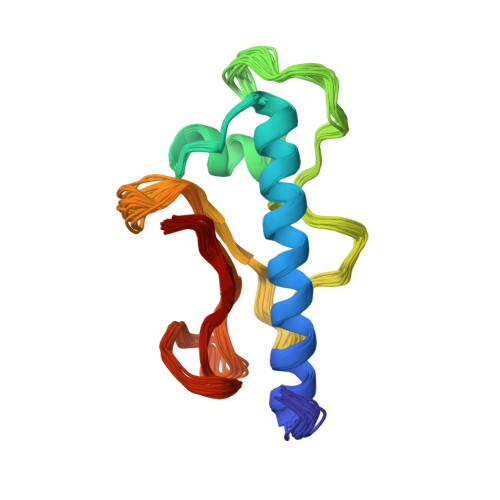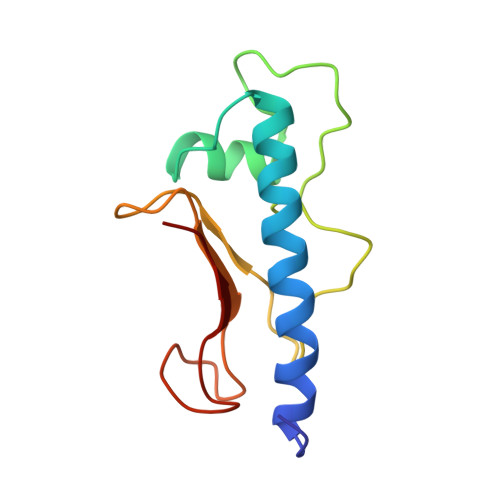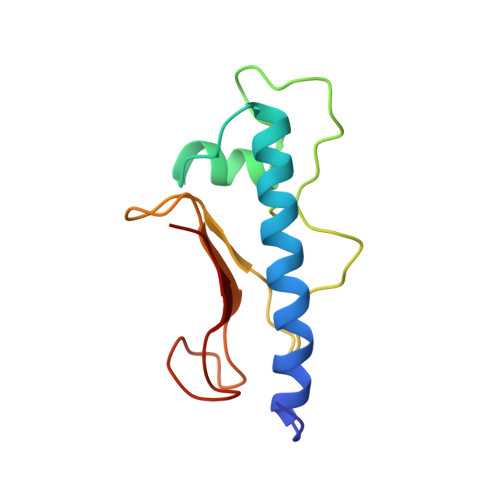Structure of the Pseudomonas aeruginosa XcpT pseudopilin, a major component of the type II secretion system
Alphonse, S., Durand, E., Douzi, B., Waegele, B., Darbon, H., Filloux, A., Voulhoux, R., Bernard, C.(2009) J Struct Biol
- PubMed: 19747550
- DOI: https://doi.org/10.1016/j.jsb.2009.09.003
- Primary Citation of Related Structures:
2KEP - PubMed Abstract:
The bacterial type II protein secretion (T2S) and type IV piliation (T4P) systems share several common features. In particular, it is well established that the T2S system requires the function of a pilus-like structure, called pseudopilus, which is built upon assembly of pilin-like subunits, called pseudopilins. Pilins and pseudopilins have a hydrophobic N-terminal region, which precedes an extended hydrophilic C-terminal region. In the case of pilins, it was shown that oligomerisation and formation of helical fibers, takes place through interaction between the hydrophobic domains. XcpT, is the most abundant protein of the Pseudomonas aeruginosa T2S, and was proposed to be the main component in the pseudopilus. In this study we present the high-resolution NMR structure of the hydrophilic domain of XcpT (XcpTp). XcpTp is lacking the C-terminal disulfide bridged "D" domain found in type IV pilins and likely involved in receptor binding. This is in agreement with the idea that the XcpT-containing pseudopilus is required for protein secretion and not for bacterial attachment. Interestingly, by solving the 3D structure of XcpTp we revealed that the previously called alphabeta-loop pilin region is in fact highly conserved among major type II pseudopilins and constitutes a specific consensus motif for identifying major pseudopilins, which belong to this family.
Organizational Affiliation:
Architecture et Fonction des Macromolécules Biologiques (AFMB), CNRS, Université de Provence et Université de la Méditerranée, UMR6098, Case 932, 163 Avenue de Luminy, 13288 Marseille cedex 9, France.
















